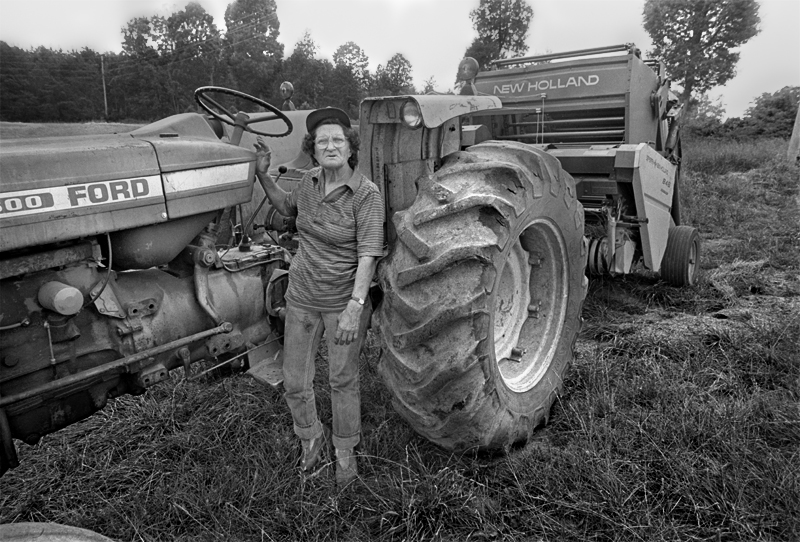Cherokee Stickball Player, at the First Cherokee Reunion, Red Clay, Tennessee, 1984
In 1984 I had the opportunity to photograph the first reunion between the Eastern and Western Bands of the Cherokee since the Trail of Tears in 1837. I was on assignment for the Durham-based weekly, The Independent, and working with the acclaimed North Carolina author, Bland Simpson. This photograph ran on the cover.
In July of this year, my long-time friend and collaborator, Charlie Thompson, and I took a scouting trip in north Georgia, east Tennessee and western North Carolina with a thought of a modern-day project on the Trail of Tears. After four days of unrelenting heat, we found many signs and remnants - museums, interpretive centers, and historical markers - in places such as New Echota, Blythe Ferry, and Ross's Landing. We saw few Cherokee. Land that had once been the homeland of thousands of Cherokee (considered the first of the "civilized" tribes), illegally stolen, had been transformed into small towns, fast food restaurants, and modern highways.
We drove to Red Clay, which was the last site of the capital of Cherokee Nation before their forced removal. There, unbeknown to us, the Cherokee were celebrating their 32nd Tribal Reunion. Singing, dancing, food, crafts, a wonderful Cherokee storyteller, Fred Bradley, whose wife, Dovie, shared water and peaches with us.
Fancy Dancing, 32nd Cherokee Tribal Reunion, Red Clay, Tennessee, 2016
At Blythe Ferry, Tennessee, we found the Cherokee Removal Memorial Park. Here, over 9,000 Cherokee and Creek who had been stockaded for weeks, were forced onto flatboats across the Tennessee River to begin their trek westward to Indian Territory in what is now northeast Oklahoma. Together, Charlie and I were struck by the symbolism of this spot. The native peoples, one foot on their homeland, the other stepping onto these boats, knowing in their hearts they would never touch that land again.
There, we met a young white woman. She was fleeing an abusive partner. Distraught, her arms bruised, she had left with no money or food. She had taken one of the boyfriend's cars, replete with a rebel flag front license plate, and just started driving, seeking water she said, cleansing, and wound up in this holiest of Cherokee sacred places. She had performed a self-baptism in the river and emerged wet and talkative. We gave her our food and our ears, advice from fathers of children her age. She drove off, to a place and a life unknown to her. Perhaps, we thought, this is the present day story of the Trail of Tears.
Cherokee Removal Memorial Park, Blythe Ferry, Tennessee 2016





